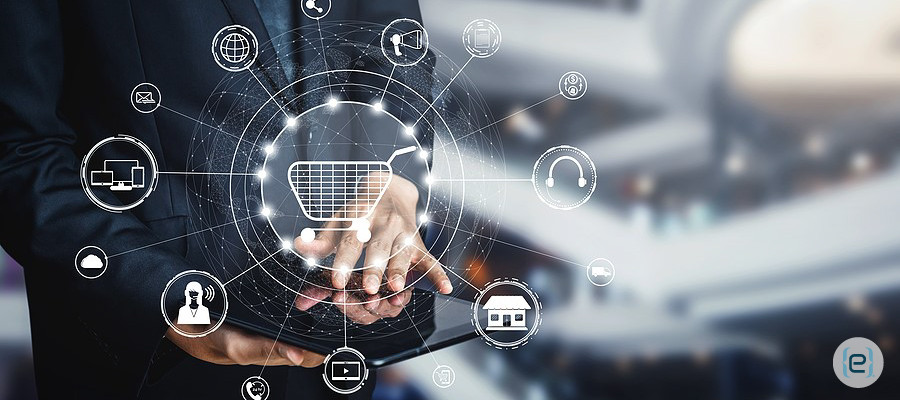Retail Leaders Embracing Dynamic Computing Despite Cybersecurity Risks
The rapid evolution of computing has placed retail businesses in a constant struggle between innovation and risk. While dynamic computing offers significant opportunities for technological advancements in the retail industry, it also introduces new security challenges that retailers must address to safeguard against modern threats.
The Promise and Peril of Dynamic Computing
Retailers are optimistic about the potential of dynamic computing to improve operational performance, particularly in AI strategy development and sophisticated supply chain management. A substantial 86% of respondents in the LevelBlue 2024 Futures Report: Cyber Resilience in Retail, anticipate that dynamic computing will enhance their operations within the next three years. However, the report also reveals a significant concern: 82% of respondents acknowledge the increased exposure to risk that comes with dynamic computing.
Despite this awareness, a substantial majority (77%) believe that the benefits of dynamic computing outweigh the cybersecurity risks. While retailers are eager to invest in the technologies underpinning dynamic computing, 62% acknowledge being cautious or late adopters of AI.
Theresa Lanowitz, Chief Evangelist of LevelBlue, emphasizes the importance of a broader approach to cyber resilience, stating: "Retailer leaders need to be thinking broadly about overall cyber resilience. They need to be concerned with establishing visibility into the entire IT estate and protecting the whole organization, including supply chains and meeting the demands of customer data privacy."
Navigating the Labyrinth of Supply Chain Security
The report highlights the growing concern over supply chain attacks and vulnerabilities stemming from third-party sources. A significant 67% of respondents cite a lack of visibility into their physical and software supply chains as a major concern. Furthermore, 75% struggle with assessing supply chain risk, with only 36% reporting complete or near-complete security for their supply chains.
The Endpoint: A Focal Point for Cybersecurity
The report stresses the crucial role of endpoint security in mitigating cybersecurity risks, especially in the retail sector. Retail organizations often have a dispersed workforce across multiple locations, including stores, warehouses, and internal IT systems with varying architectures and platforms. This diversity in endpoint devices, including desktops, mobile devices, and warehouse tablets, creates a vulnerability for cyberattacks.
The Three-Pronged Strategy for Endpoint Security
Given the complexity of the retail endpoint computing environment, a three-pronged approach is essential to effectively defend against cyberthreats:
- Secure by Design: Implementing robust endpoint security measures, such as multi-factor authentication (MFA), strong password policies, and encryption, is paramount to preventing unauthorized access to sensitive data.
- Visibility and Control: Organizations need a comprehensive view of their endpoint landscape, encompassing all devices and their configurations. This allows for effective monitoring, detection, and response to potential threats.
- Proactive Patching and Updates: Regularly updating operating systems and software with the latest security patches is essential to address vulnerabilities and prevent exploits.
The Human Factor: Cultivating a Culture of Personal Security
Retail organizations are investing in cloud-based management systems to improve operational efficiency, particularly in areas like billing, CRM, and inventory management. This focus on efficiency extends to the endpoint, where retailers are seeking ways to streamline management of their often vast number of devices running various operating systems.
The Power of Unified Endpoint Management
Unified endpoint management systems offer a single point of control and visibility for diverse endpoint devices, including Android and Apple devices. This unified approach can support different communication platforms and applications, addressing the challenge of retailers using various cloud providers and computing platforms.
However, it’s crucial to remember that while technology plays a vital role in endpoint security, the human factor remains a critical element. Retail organizations rely on a mix of permanent and seasonal workers, making it challenging to consistently engage everyone in personal data security practices.
Building a Culture of Personal Security
Creating a culture of personal security involves cultivating a sense of responsibility among employees. Organizations can achieve this through:
- Employee Training and Awareness: Providing regular training on cybersecurity best practices, including phishing scams, social engineering, and safe data handling, can significantly reduce the risk of human error.
- Open Communication: Openly communicating security policies and expectations, as well as the potential consequences of security breaches, helps foster a sense of ownership.
- Incentivize Security: Recognize and reward employees who demonstrate strong security practices. This encourages positive reinforcement and promotes a culture of security awareness.
The Importance of Robust and Resilient Systems
Retail organizations must provide their employees with secure and reliable endpoint computing systems. This includes:
- Secure Operating Systems: Implementing a secure operating system minimizes the risk of vulnerabilities and exploits.
- Cloud Migration: Shifting critical data and applications to the cloud enhances security and resilience.
- Unified Endpoint Management: Simplifying endpoint management through unified solutions streamlines security processes and improves visibility.
By combining individual participation in security practices with robust security technologies, retail organizations can establish a comprehensive and effective approach to mitigating cyber threats in the ever-evolving digital landscape.
The Future of Retail Cybersecurity: A Proactive Approach
The retail industry faces increasing challenges in protecting consumer data and ensuring operational stability. As dynamic computing continues to transform retail operations, proactive cybersecurity measures are paramount to staying ahead of emerging threats. Organizations need to adopt a holistic approach, prioritizing technology investment, employee training, and a culture of personal security to build a truly resilient and secure ecosystem.
Taking Action: Building a Strong Security Foundation
The urgency to address cybersecurity in the retail sector cannot be overstated. As the 2024 Verizon Data Breach Investigations Report reveals, the retail sector experienced a significant number of data breach incidents in 2023. These incidents highlight the vulnerability of retailers to cyberattacks and the potential for costly consequences.
[Retail organizations must prioritize building a strong security foundation by:
- Implementing Secure by Design Principles: Integrating security into every stage of the development lifecycle ensures that systems are built with security in mind.
- Investing in Advanced Security Technologies: Leveraging tools like endpoint detection and response (EDR) and security information and event management (SIEM) can help detect and respond to threats in real-time.
- Partnering with Security Experts: Collaborating with security professionals can provide valuable insights, guidance, and support for building a robust security posture.](https://www.retailtouchpoints.com/features/executive-viewpoints/when-it-comes-to-retail-cybersecurity-do-take-it-personally)
A Collaborative Approach to Cybersecurity
The journey towards a more secure retail environment requires collaboration between industry leaders, government agencies, and security experts. By sharing best practices, fostering innovation, and working together to raise awareness, we can collectively build a more resilient and secure future for the retail sector.
By embracing the principles of secure by design, investing in advanced technologies, and cultivating a culture of personal security, retail organizations can effectively navigate the complexities of the digital landscape and protect their businesses and customers from the ever-evolving threat of cyberattacks.

















